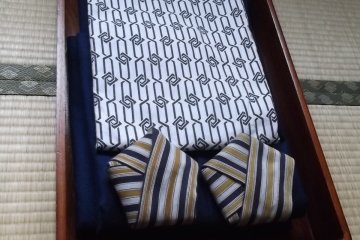
อิโระฮะ เรียวกัง เมืองอาโอโมริ
Peter Sidellเดินจากสถานีอาโอโมริเพียง 2 นาที อิโระฮะ เรียวกังเป็นที่พักญี่ปุ่นสไตล์ดั้งเดิมที่มีห้องพร้อมพื้นทาทามิใกล้จุดชมวิว ที่ช้อปปิ้งและชีวิตยามค่ำคืน

Since opening in July 2006, the Aomori Museum of Art has been active in having exhibitions, concerts, plays, and workshops by Aomori-native artists and performers. Most notably, Yoshitomo Nara, Shiko Munakata, Shuji Terayama, and Toru Narita are forerunners of the museum’s exhibits; with The Aomori Dog by Yoshitomo Nara being the museum’s symbol.
Closed the 2nd and 4th Mondays monthly.
The museum architecture itself is also an important part of the surrounding landscape and features as an exhibit itself. Designed by Jun Aoki to resembled the nearby Sannai Maruyama Historical Site excavation area, the simple walls and shape lend itself well to the beauty of the land. Atsuki Kikuchi, responsible for the visual identity of the building, decorated the exterior with stylized trees that represent the Aomori landscape and its connection to nature.
With four floors of art to explore, the Aomori Museum of Art contains a theater, community gallery, restaurant, shop, and more in addition to its galleries. The galleries also contain artwork from international artists, such as Kandinsky, Klee, Matisse, Rembrandt, and Picasso. Visit this museum that brings nature and art together in a harmonious union.
10 minutes by car from JR Shin-Aomori station or 20 minutes from JR Aomori station.

เดินจากสถานีอาโอโมริเพียง 2 นาที อิโระฮะ เรียวกังเป็นที่พักญี่ปุ่นสไตล์ดั้งเดิมที่มีห้องพร้อมพื้นทาทามิใกล้จุดชมวิว ที่ช้อปปิ้งและชีวิตยามค่ำคืน
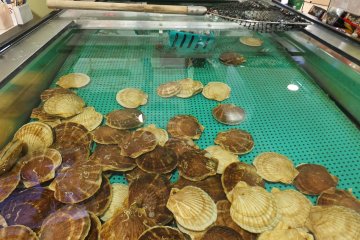
ร้านอาโอโมริ โฮตาเตะโกยะ ได้ยกกระบะที่เต็มไปด้วยหอยเชลล์ตัวยักษ์ขนาดเท่ากำปั้นมือแบบมีชีวิตอยู่มาตั้งกลางร้าน ให้คุณได้ทดสอบฝีมือความแม่นในการตกหอยเชลล์แบบถึงที่ถึงใจถึงอารมณ์ ตกได้เท่าไหร่กินได้เท่านั้น ในเวลา 3 นาที!
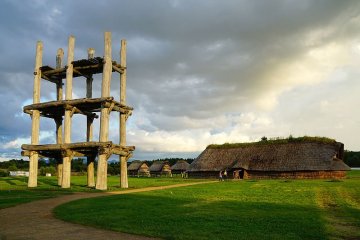
The Sannai-Maruyama Site is a historically important archeological site and museum located in Aomori Prefecture. The ruins belonged to a large Jomon-period settlement and were originally rediscovered in 1992. The people of the Jomon age were known for their sedentary lifestyles and this settlement has provided artifacts as well as a look into the lives of the people of the past. Excavation of the site unearthed storage pits and above-ground storage further cementing the people as belonging to the region. The site has been designated a Special National Historical Site of Japan. Visitors may make their way to the site and see the reconstructions of Jomon-style architecture and artifacts native to the site. The Sanmaru Museum exhibits over 1700 artifacts and about 500 Important Cultural Properties that were all excavated from the Sannai-Maruyama site. Inside the museum, guests will be able to watch a video on the lifestyle of the Jomon people (with English audio devices available upon request). Alongside the artifacts from the Sannai-Maruyama site are figures that best represent how scientists believe the tools were used.
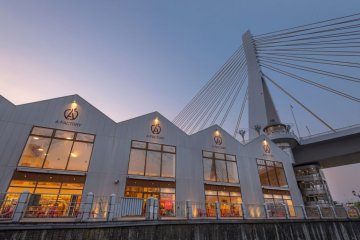
A-Factory in Aomori Prefecture is a premier duty-free marketplace that houses and sells various products, such as sweets, processed goods, fresh vegetables and fruits, and more wonders from all over Aomori, most notable are, of course, Aomori apples. Aomori remains the largest and most popular producer of apples in Japan. Opened in late 2010, in conjunction with the extension of the Tohoku Shinkansen line to Aomori, the market is located on the Aomori Bay and makes for a striking outline against the Aomori bay Bridge. For tourists visiting the capital of the prefecture, A-Factory is an easy and convenient stop for specialty products. As well as being a market for prefectural goods, the factory also serves as the brewery for an in-house apple cider that visitors can see being produced. By purchasing a tasting card, guests can even sample the freshly produced cider of A-Factory. In addition, there are several eateries and restaurants inside, ranging from burgers to apple fries. All of the shopping and sampling and eating that awaits inside of A-Factory can also be enjoyed on the terrace or with a bay view from the large windows.
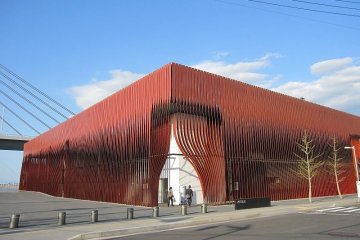
The Nebuta Museum Wa Rasse is located in Aomori City in the prefecture of the same name in the north of the main island of Honshu. It was opened in 2011 and is dedicated to the famous Nebuta Matsuri, the most famous summer festival in the region, which takes place every August in the port area of Aomori takes place. The festival is best known for its huge, raft-like floats, which are largely made of Japanese Washi paper and are pulled through the streets in a parade accompanied by dancers and musicians. The motifs come mainly from Japanese mythology and are illuminated at night. The Nebuta Museum Wa Rasse is open all year round and offers everyone the opportunity to marvel at the impressive, up to 9 meters long and 5 meters wide wagons. The four most beautiful of these are exhibited in the museum every year and are always replaced by four new cars after the festival. The museum is within easy walking distance of Aomori Central Station.